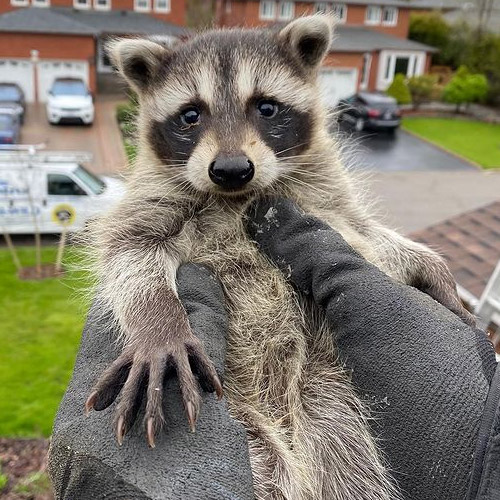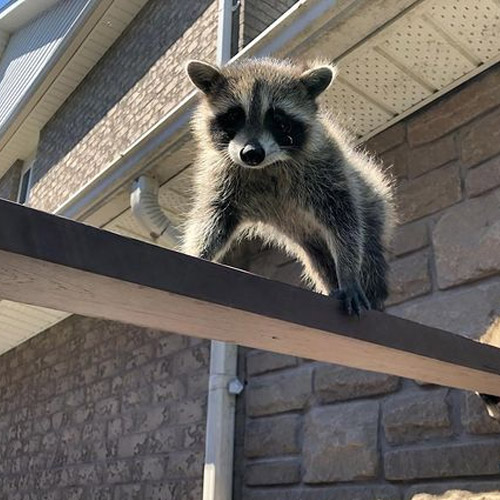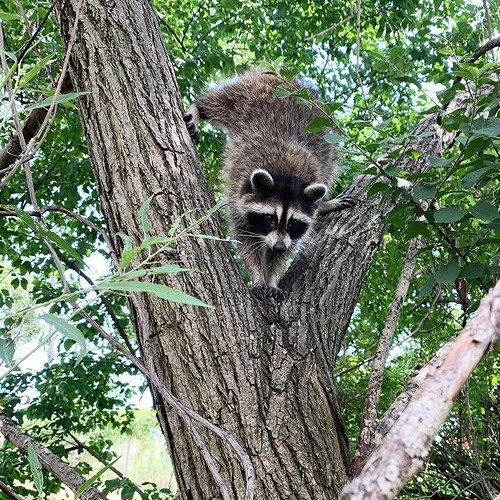Home / Wildlife Control Services in Vancouver / Raccoon Faqs
Raccoon FAQS
The following are some common raccoon questions that our customers ask us:
I have been told that raccoons will leave my attic on their own after 6 – 8 weeks. Is that true?
Not likely. Raccoons have been known to have multiple dens sites in a residential area. They may leave temporarily but are sure to return, especially if one of their other den sites is disrupted or destroyed. The only way to ensure they are permanently excluded is to use humane removal techniques and to install professional raccoon proofing. In actuality, removing the raccoons properly will essentially teach them that it is an unsafe den site, whereas allowing raccoons to leave on their own will often have them trying to get back into the area at some time as they remember a suitable den site.
We only hear one raccoon going in and out of our attic so there are probably no babies, right?
Not necessarily. Raccoon females that have just given birth often appear solitary. This is because the babies remain in the nest and may not be heard for the first few weeks. It takes trained technicians to identify these hidden dens and remove them using humane, hands-on techniques.
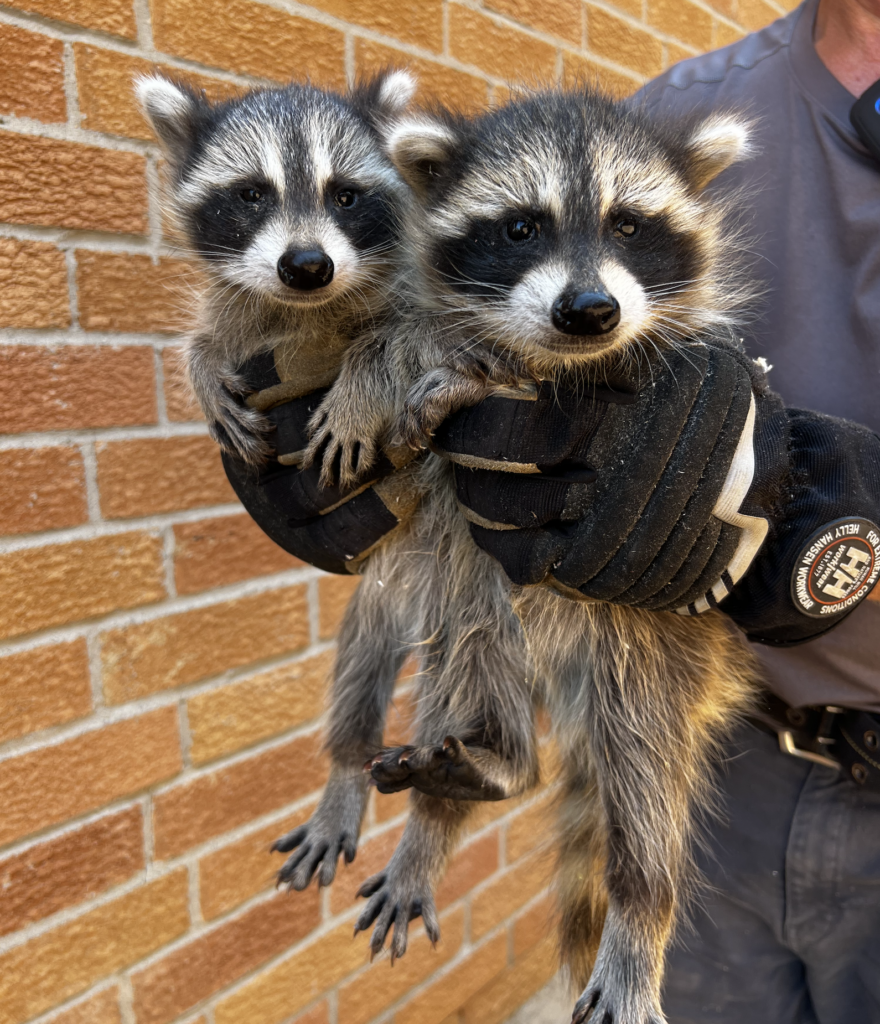

I’ve been told that you have to catch the raccoons and relocate them far away from your house otherwise they will tear back in. Is that true?
No. The majority of people believe that trapping and relocating wildlife is a good solution to the problem of “nuisance wildlife.” They think that if the offending animal is trapped and relocated and the number of animals in the area is reduced, the problem will go away. However, this is not the case. When an animal is removed from an area, it creates a vacancy that other animals in the area can take advantage of by moving in and accessing the existing food and shelter. This means that there is no overall reduction in the number of animals in the long run, and trapping and relocation is ineffective and a waste of money.
Due to the intelligent nature of the raccoon and their territorial nature, following the proper removal procedures the raccoon will normally not want to go back into that den site due to fear.
How do I know if I have raccoons in my home or building?
Raccoons emit a number of vocalizations. Further, raccoons enjoy building dens above warm quiet spaces such as the attic above a bedroom. Because they are nocturnal, their activity can typically be heard at night. They may sound like a human walking on the ceiling. Fur and feces can be found at entry points accompanied by an unpleasant odour.
Food and Feeding
Frequency: Raccoons feeds every day but must forage to locate their food.
Time of day: Raccoons are nocturnal so are most active at night.
Diet: They are omnivores which means they will eat both plants and animals as a primary food source. They prefer veggies, fruits, insects, slugs, snails, fish, frogs, turtles, small animals, eggs and are especially attracted to anything that is left behind in the garbage. They enjoy washing their food prior to eating which is where their latin name comes from – lotor means “one who washes”.
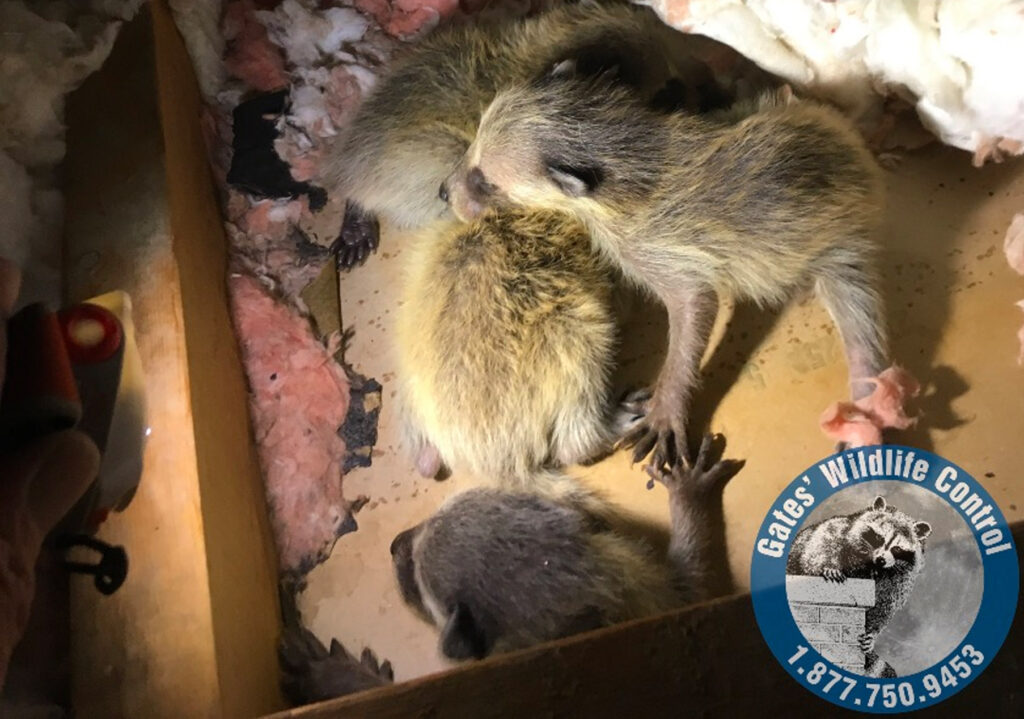
Morphology and Lifestyle
- Body length: 18-30 in
- Tail length: 8 – 13 in
- Weight: Average of 25lbs but up to 46 lbs
- Habitat: Warm, dry and quiet spaces
- Call: Raccoons can emit a large number of whimpers, churrs, snarls and squeals
- Lifespan: 10 or more years in the wild
Did You Know?
- Raccoon fact: The raccoon has very dexterous paws and are intelligent enough to twist handles and open doors.
- Raccoon fact: When in distress, baby raccoons can sounds like human babies.
- Raccoon fact: Their motherly instinct in is very strong and they will cause major damage if separated from their young.
- Raccoon fact: Raccoons can have as many as 5 or 6 den sites in a residential area.
- Raccoon fact: Raccoons prefer to wash their food before eating it.
- Raccoon fact: Raccoons can carry the rabies virus without showing any signs or symptoms.
More About Raccoons

Humane Raccoon Removal

Humane Skunk Removal

Humane Squirrel Removal
Do It Yourself Dangers
For those who may be tempted to take on the task of removing animals and animal proofing themselves, it is important to remember that it can be a dangerous undertaking. Falling off ladders and roofs while attempting to remove animals or seal entry points can result in serious bodily harm. In some cases, even aggressive animals can pose a danger to those trying to remove them. It is best to leave these tasks to experienced professionals who have the knowledge and equipment to safely and effectively handle wildlife removal and animal proofing. Attempting to do it yourself can put you at risk of injury and potentially even more damage to your home.










